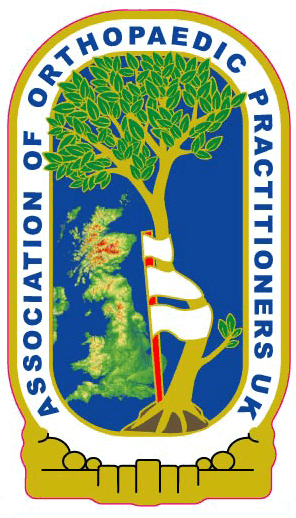Association of Orthopaedic Practitioners Guidance for the removal of Kirschner wires by Orthopaedic Practitioners or Registered Nurses* in an orthopaedic outpatient setting.
This guidance builds on previous work by the Orthopaedic and Trauma Alliance and Hywel Dda Health Board. The guidance has been approved by the British orthopaedic Association Casting Sub-committee.
Summary
The removal of Kirschner wires (K-wires) from orthopaedic and trauma patients is often performed in the outpatient setting. The ability of practitioners to extend their role to perform this procedure gives the opportunity for a reduction in patient wait times as well as less movement between areas of the department. This guideline is advisory and the individual’s extended role should be assessed in conjunction with local clinical need and would need to be endorsed by the local senior medical team.
Aim
The aim of the protocol is to prevent harm to patients and improve patient flow by providing practitioners with the knowledge and skill required to remove K-wires safely.
Objectives
The practitioner should be able to….
- Describe the use of K-wires in orthopaedic surgery.
- Outline the benefits of practitioners extending their role to perform K-Wire removal.
- Identify key aspects of patient assessment prior to K-wire removal.
- Provide evidence of current Aseptic Non Touch Technique training certification.
- Safely remove k-wires following a period of supervision.
- Provide accurate information and advice to the patient before, during and after the procedure.
Equipment List
- Dressing trolley
- Wound cleansing pack
- Sterile gloves
- Wire-holder forceps
- Betadine lotion or other appropriate antiseptic solution
- Dressing for post-procedure
- Sharps box
Procedure
Following written medical request to remove wires
Patient assessment and consent:
- Consult patient’s xrays to check the direction of the wire(s) and the number of wires in situ.
- Describe the procedure to the patient (and/or guardian) and obtain verbal consent and document.
- Discuss relevant medical history (including allergies e.g iodine)
- Ensure the patient is positioned comfortably on the trolley or couch with their limb supported.
- Remove dressings and observe the pin-site(s) (if there is evidence of infection, irritation or trauma – refer to requesting surgeon)
Method
Using Aseptic non Touch Technique
- Remove plaster and/or dressings
- Clean the site with Betadine or other appropriate antiseptic solution
- Grip the wire firmly with wire removers and rotate left to right
- If it still feels tight, apply steady traction to the wire and counter traction to the limb, proceed with circumferential half turns to pull in the reverse line of insertion until the wire has been removed.
- If the wire will not come free after the steady traction and rotating, consult the doctor in charge of the patient.
- Place the wire(s) in the sharps box.
- Allow the wire tract to bleed momentarily then apply a swab using steady pressure until
haemostasis is achieved.
- Repeat for each wire until all have been removed, as requested.
- Apply dressing as per local protocols.
- Wire holders to be cleaned and sterilised following local procedure.
If you have any concerns during the procedure stop and consult the doctor in charge of patient.
Patient Advice
The patient should be advised to:
Keep the area clean and dry for the next 24hrs (or longer if other wounds or a cast are present)
Take a mild analgesia e.g paracetamol for pain relief
Contact their GP, A&E or fracture clinic should they experience any burning pain, smell or discharge at the pin-site.
Assessment Sheet
| The student is able to.... | Evidenced by: |
| Discuss the use of K-wires in orthopaedic surgery, including: | |
|
| |
|
| |
- Fracture healing stages and time span
| |
- Potential complications related to K-wires
| |
- K wire technique of removal
| |
Supervised Practice
| DATE | | | | | |
| Xray review | | | | | |
| Obtained consent | | | | | |
| Assessment of patient | | | | | |
| Assessment of pin site(s) | | | | | |
| Positioning of patient | | | | | |
| Preparation of trolley and equipment | | | | | |
| Cleaning of pin-site | | | | | |
| Removal of wire | | | | | |
| Disposal of wire | | | | | |
| Dressing application | | | | | |
| Advice given | | | | | |
| Signature of assessor | | | | | |
| Signature of student | | | | | |
*The term ‘practitioners’ will be used to describe
orthopaedic practitioners (who hold the British Casting Certificate) and
registered nurses throughout the document

